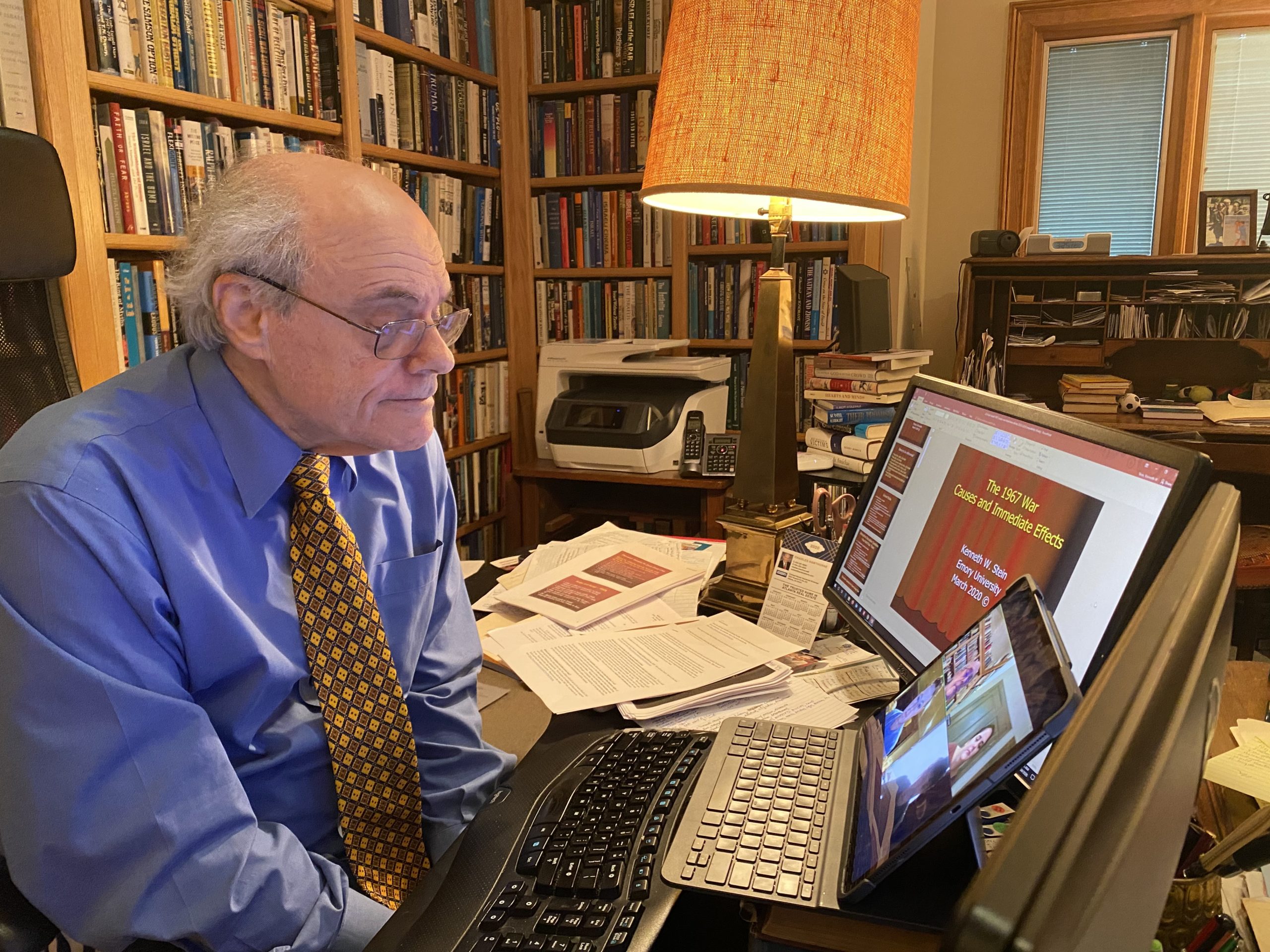
On January 1, 2022, I completed 43 years of teaching at Emory University. It was a great run and great fun. Along the way, I accumulated more pieces of paper than was necessary, among them every syllabus, reading list , class rolls, course evaluations, and bibliographies assigned. Collectively those guide posts for teaching have reminded me that undergraduate students have enormous, if not unlimited capacities to absorb information and concepts about history; give them a chance to unfurl what happened with reliable and non-polemical sources before them. Actualizing learning may be convenient but delving into processes that address underpinnings are substantive, longer lasting, and substantial. If I may say so, I believe that is why students enjoyed learning with me.
At Emory, for about a quarter century most of the teaching faculty have taught small freshmen seminars, 12-18 students per class. I taught this Freshman modern Israel seminar twenty times, with students repeatedly commenting how interesting the course was, ‘fascinating to learn the history behind the headlines, …so much more complex that I thought.” Students delved into concepts, context, and perspective, The syllabus, Modern Israel, is presented here with dust removed! (https://israeled.org/wp-content/uploads/2022/01/his190syl.s06-modern-Israel-Freshman.pdf)
Originally designed for 26-30 hours of in class work or engagements. I have added some new materials, including videos, teaching tools, on-line readings, and source documents. These were not available electronically 16 years ago, The syllabus can be used for self-teaching, group engagements or in experiential settings. All ages from teens upward should find the syllabus a usable guide. Also on the CIE website, there are other course guides and syllabi (https://israeled.org/educators/college-syllabii/) all with detailed readings, book selections, and topical suggestions for discussions.
Ken Stein, January 4, 2021
